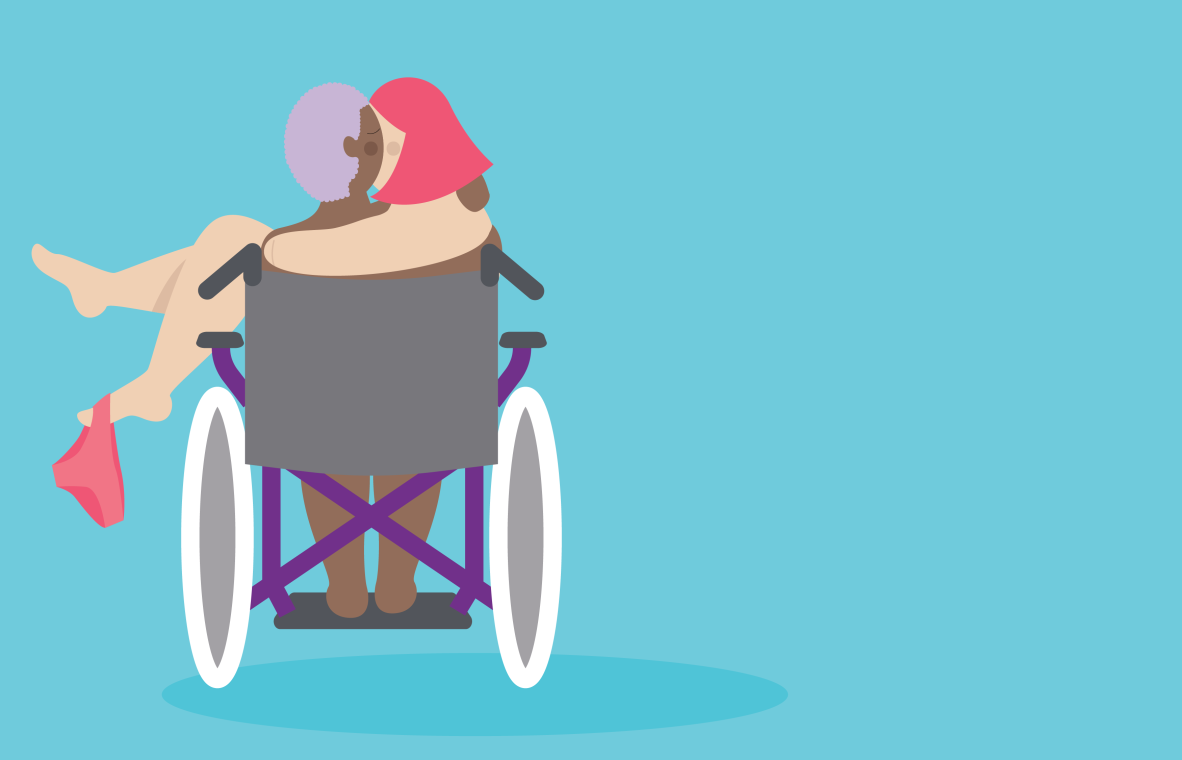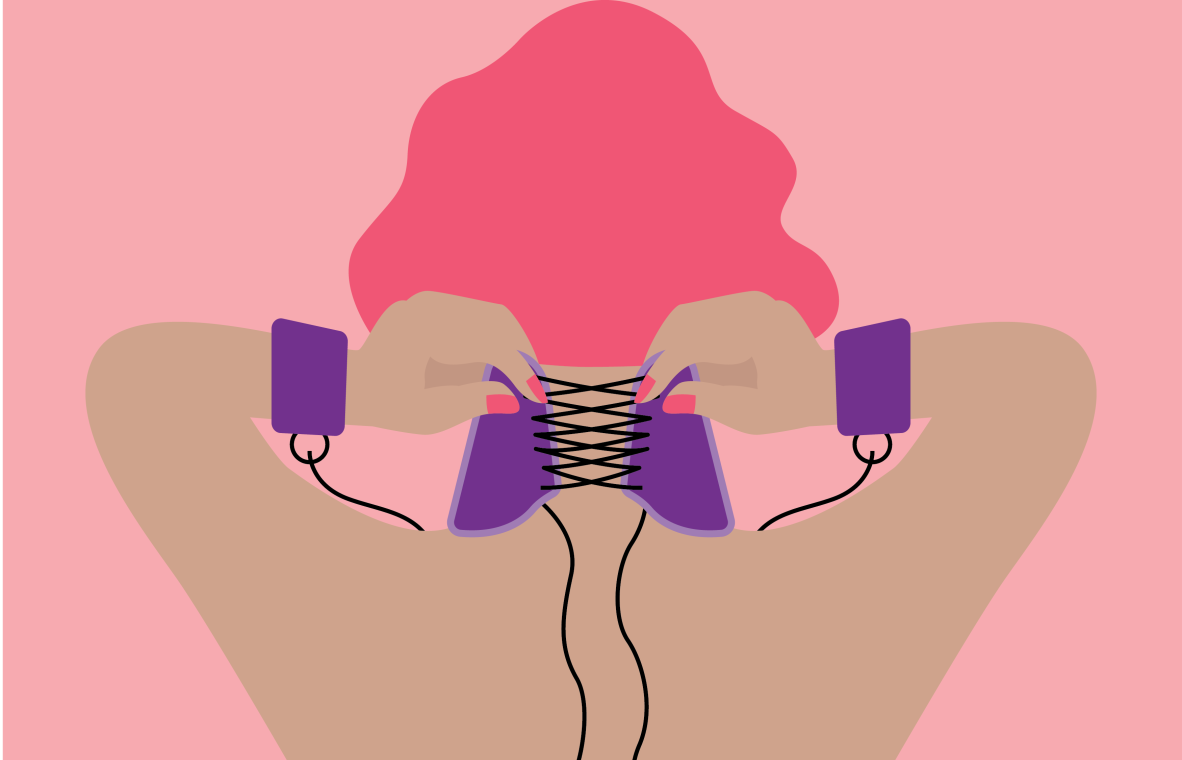Chronic Pain and Masochism: Why Kink is so Empowering

“Allowing myself to be vulnerable and receive kink pain has allowed me to feel more connected to my body and manage pain. It’s like I can forget how much my back, joints, or whatever hurt in the moment when my attention is forcibly drawn to the impact I’m receiving,” – Evan shares the impact masochism and kink can have for people with chronic pain and disabilities, and tips for playing safe.
The idea that those experiencing pain constantly may want to participate in receiving more pain through masochism may sound absurd. However, it’s a common experience for those with chronic pain to seek out masochistic experiences.
This article will give an overview of the nuances in kink pain and chronic pain, how chronic pain can be controlled through kink, how kink is empowering, and finish off with some quick safety tips.
How is kink pain different to chronic pain?
In medical terms, according to the Institute for Chronic Pain, chronic pain can be defined as an pain that lasts longer than 6 months, and occurs in addition to whatever is initially causing the pain , as well as can be viewed as having a clear cause in terms of diagnosis or healed injury, but may also not have a clear cause.
Kink pain can be described as deliberate and consensual pain resulting from BDSM acts. This type of pain is expected and therefore participants know what the experience will entail. For the sake of this article, I will mainly be referring to impact play (e.g., spanking, flogging, caning etc), however other forms of kink pain exist, including various forms of edge play.
In the research article ‘Chronic Pain as Fluid, BDSM as Control’, Sheppard describes chronic pain as not constant and ever evolving, “the only thing that is reliable about chronic pain is the unreliability”. This contrasts against consensual kink pain, which is controllable, predictable, and can vary in intensity depending on preferences.
‘Using pain, living with pain’ explores how context dependent the sensation of pain is interpreted, as well as the socially constructed ideas of “compulsory able-bodymindedness” (the idea of having a “well” body and mind is the base line of normal). Sheppard describes pain as being viewed as “animal and dehumanising” and therefore unnecessary and one should not live with it and explores the idea that a body in pain is inherently suffering, and this pain must be stopped.
If pain relief doesn’t work, then there is something inherently wrong with the individual. The assumption that chronic pain means one must always be suffering is uncomfortable and inaccurate. Experiencing pain without suffering, especially when it’s by choice is possible.

Controlling chronic pain
Disability and chronic pain often feel like factors outside of our control. Regaining the power over your own narrative to decide how and when you feel certain sensations and experiences is radical and empowering.
The desire for control, loss of control, and how we control our lives to manage chronic pain are all common experiences for those with chronic pain. Kink enables us to gain that control.
In my experience, allowing myself to be vulnerable and receive kink pain has allowed me to feel more connected to my body and manage pain. By focusing on different kinds of pain and sensation, it almost “takes away” from the constant chronic pains. For me, it’s like I can forget how much my back, joints, or whatever hurt in the moment when my attention is forcibly drawn to the impact I’m receiving.
There’s also something significant to be said about giving kink pain to others as a way to control chronic pain. For me, the rush of adrenaline when I’m spanking or whatever to someone else kind of supersedes my own experiences of pain in the moment.
The excitement in seeing how someone is reacting takes my attention away from the pain I’m always in, as well as the pain associated with performing the impact play. It almost feels like you’re transferring your pain to someone else in a metaphorical yet quite literal way.
Empowerment through kink
From my perspective, sexual freedom and empowerment is a strong positive for everyone, especially in communities which are already desexualised and infantilised (i.e. disability). Through being a disabled kinky person, there is a subversion of expectations that can be really powerful.
When we’re so often portrayed as weak and needing help and saving, being proud and unapologetic in these identities is radical and an act of self-love. You deserve to feel comfortable and powerful within yourself! And kink is a great way to explore and express this.

How to safely engage in kink with disabilities
Sex involving pain inherently comes with risks that are applicable to anyone involved. These risks can be especially heightened for disabled people and those with chronic pain. I have a few quick tips to send you on your way, in addition to already established BDSM safety tips.
Start slow and communicate
Starting slower is a great idea for anyone, but especially those with chronic pain or disability. It’s important to establish your personal limits and understand that they may change drastically depending on the day and current levels of pain.
Speaking for myself, I can handle quite significant impact on good pain days, but sometimes I can’t handle any of it! It’s okay for this to be constantly changing, just make to communicate this clearly to your partner(s).
Safety signals and safe words
Safety signals in addition to safe words are an excellent idea. I find sometimes when we’re having such an intense experience, it can actually be difficult to get the words out. Some suggestions are finger snapping, waving hands, and dropping a loud object (such as keys or marbles).
Discuss medical conditions before you start
In depth discussions on medical conditions BEFORE commencing a scene is vital in ensuring safety. All participants must be aware of all medical conditions or injuries that could have impact during the scene. For examples on medical questions and limitations to consider, check out this article, Bondage Safety Tips for People with Disabilities.
And most of all, just have fun with it! Sex and kink are meant to be enjoyable for all parties involved. If something isn’t working out, just switch it up and find what is most pleasurable for you! Check out my article, Tips for having hot disabled sex for some more pointers.
Have fun, be safe, and enjoy!
Shop bondage products and BDSM gear here.
Illustrations by Aimée Sullivan. Follow her on Instagram: @aimeeisokay
Read next:
- Tips for having hot disabled sex!
- The best sex toys for people with disabilities
- Best sex toys and products to help with painful sex
- Best sex toys for erectile dysfunction (ED) according to a sex educator
References used in this article
- Tellier, S 2017, ‘Advancing the Discourse: Disability and BDSM’, Sexuality and Disability, vol. 35, no. 4, pp. 485–493.
- Sheppard, E 2019, ‘Chronic Pain as Fluid, BDSM as Control’, Disability Studies Quarterly, vol. 39, no. 2.
- Sheppard, E 2018, ‘using pain, living with pain’, Feminist Review, vol. 120, no. 1, pp. 54–69.
Content disclaimer:
The information in this article has been fact checked and reviewed for accuracy by Adulttoymegastore’s team of content specialists and sexual wellness experts, including Sex Educator Emma Hewitt.
Adulttoymegastore does not provide medical advice, diagnosis, or treatment for illness. Any information published on this website, either by Adulttoymegastore or its authors, is not intended to be a substitute for medical advice, and you should not take any action before consulting with a medical professional.











































































































































































































































































































































































































































































